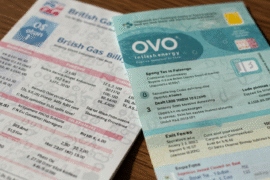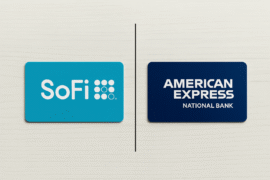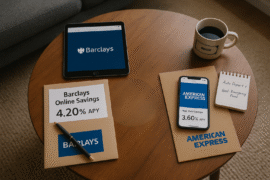This article may contain references to products or services from one or more of our advertisers or partners. We may receive compensation when you click on links to those products or services. Nonetheless, our opinions are our own.
The information presented in this article is accurate to the best of our knowledge at the time of publication. However, information is subject to change, and no guarantees are made about the continued accuracy or completeness of this content after its publication date.
Key Highlights
- Savings and loan associations (S&Ls), also called savings banks or thrifts, focus on residential mortgages and savings accounts.
- They are often owned by their customers rather than shareholders, fostering a community-oriented approach.
- S&Ls began in the U.S. during the Great Depression to help more people achieve homeownership.
- While less common today, S&Ls still offer competitive interest rates on savings accounts and personalized service.
- Deposits in S&Ls are federally insured, providing the same level of protection as banks and credit unions.
Introduction
In the vast world of financial institutions, banks and credit unions often dominate the conversation. But what about savings and loan associations (S&Ls)? These institutions have played a vital role in American financial history, particularly in helping individuals buy homes. Let’s delve into what S&Ls are, their evolution, and whether they remain a viable option for managing your finances today.
Understanding Savings and Loan Associations
Savings and loan associations are financial institutions that primarily focus on two services: helping individuals save money and offering home loans. Unlike commercial banks, S&Ls are designed to serve individuals rather than businesses, emphasizing residential mortgages and community-oriented banking.
What Are Savings and Loan Associations?
Savings and loan associations, also known as “thrifts” or “savings banks,” operate on a mutual ownership model. This means that customers—both depositors and borrowers—are often considered the owners. This structure encourages a customer-first approach, prioritizing the financial well-being of the community over corporate profits.
While S&Ls may offer other financial products, their core focus remains on savings accounts and mortgages, catering to individuals and families rather than large businesses.
The Evolution of Savings and Loan Associations in the U.S.
The history of savings and loan associations is deeply intertwined with the American dream of homeownership. Originating in the 1800s, S&Ls gained prominence during the Great Depression. The Federal Home Loan Bank Act of 1932 established a system of S&Ls to stabilize the housing market and make homeownership accessible to more Americans.
During the mid-20th century, S&Ls became a cornerstone of residential lending, offering long-term, fixed-rate mortgages. However, the 1980s savings and loan crisis marked a turning point. Deregulation, mismanagement, and high-interest rates led to widespread failures, prompting reforms and increased oversight. Today, S&Ls are fewer in number but remain focused on their original mission of serving local communities.
Voted "Best Overall Budgeting App" by Forbes and WSJ
Monarch Money helps you budget, track spending, set goals, and plan your financial future—all in one app.
Get 50% OFF your first year with code MONARCHVIP
Comparing Savings and Loan Associations, Banks, and Credit Unions
Understanding the distinctions between S&Ls, banks, and credit unions can help you determine the best fit for your financial needs. While they share similarities, their structures, primary services, and target audiences vary.
Key Differences and Similarities
| Feature | Savings & Loan Associations | Banks | Credit Unions |
|---|---|---|---|
| Ownership Structure | Mutually owned by customers | Owned by shareholders | Member-owned cooperative |
| Primary Focus | Mortgages and savings | Wide range of services | Savings and member services |
| Commercial Lending | Limited | Extensive | Limited |
| Size and Reach | Smaller, local or regional | National or international | Often community-based |
Pros and Cons for Your Finances
Pros:
- Higher Interest Rates: S&Ls often offer better rates on savings accounts and certificates of deposit (CDs).
- Mortgage Specialization: Their focus on residential lending can lead to competitive rates and personalized terms.
- Personalized Service: Smaller, community-focused institutions can provide tailored customer service.
Cons:
- Limited Product Variety: S&Ls may not offer as many products as larger banks, such as credit cards or extensive investment options.
- Fewer Branches: Their smaller size often means fewer physical locations, which may be inconvenient for some customers.
Beginner’s Guide to Using Savings and Loan Associations
If you’re considering an S&L for your financial needs, here’s a step-by-step guide to get started:
What You Need to Get Started
Opening an account at an S&L is straightforward. Have your government-issued ID, Social Security number, and proof of address ready. Rest assured that your deposits are federally insured by the FDIC, providing the same protection as banks and credit unions.
Step 1: Research the Best Associations for Your Needs
Start by identifying S&Ls in your area or those offering online services. Compare their interest rates, fees, and customer reviews. Prioritize institutions that provide the services you need, such as savings accounts with high yields or competitive mortgage rates.
Step 2: Open an Account and Start Saving
Visit a branch or the institution’s website to open an account. Be prepared with the necessary documents and information. Once your account is open, set savings goals, whether it’s for a home down payment or building an emergency fund.
Conclusion
Savings and loan associations have played a vital role in U.S. financial history, especially in promoting homeownership. While they’re less prominent today, they remain a viable option for individuals seeking competitive savings rates and personalized service. When deciding whether to use an S&L, compare their offerings to those of banks and credit unions to determine the best fit for your financial goals. By carefully evaluating your options, you can make informed decisions to secure your financial future.
Frequently Asked Questions
What are the benefits of using savings and loan associations?
S&Ls typically offer competitive interest rates on savings accounts and CDs. They specialize in residential mortgages, often providing favorable terms. Their community focus ensures personalized customer service, and deposits are federally insured, offering security and peace of mind.
How do savings and loan associations differ from banks?
S&Ls primarily focus on savings accounts and home loans, while banks provide a broader range of services, including commercial loans and credit cards. Additionally, S&Ls are often community-based and customer-owned, whereas banks are shareholder-driven.
Are deposits in savings and loan associations insured?
Yes, deposits in S&Ls are insured by the FDIC up to $250,000 per depositor, per institution, offering the same level of protection as traditional banks.
What should I consider when choosing a savings and loan association?
Evaluate their interest rates, fees, range of products, customer service, and convenience of access, such as branch locations or online services. If you value community-oriented service and a focus on mortgages, an S&L may be a great fit.

Reviewed and edited by Albert Fang.
See a typo or want to suggest an edit/revision to the content? Use the contact us form to provide feedback.
At FangWallet, we value editorial integrity and open collaboration in curating quality content for readers to enjoy. Much appreciated for the assist.
Did you like our article and find it insightful? We encourage sharing the article link with family and friends to benefit as well - better yet, sharing on social media. Thank you for the support! 🍉
Article Title: Savings and Loan Associations: Are They Still a Smart Choice for Your Finances?
https://fangwallet.com/2025/02/14/savings-and-loan-associations/The FangWallet Promise
FangWallet is an editorially independent resource - founded on breaking down challenging financial concepts for anyone to understand since 2014. While we adhere to editorial integrity, note that this post may contain references to products from our partners.
The FangWallet promise is always to have your best interest in mind and be transparent and honest about the financial picture.
Become an Insider

Subscribe to get a free daily budget planner printable to help get your money on track!
Make passive money the right way. No spam.
Editorial Disclaimer: The editorial content on this page is not provided by any of the companies mentioned. The opinions expressed here are the author's alone.
The content of this website is for informational purposes only and does not represent investment advice, or an offer or solicitation to buy or sell any security, investment, or product. Investors are encouraged to do their own due diligence, and, if necessary, consult professional advising before making any investment decisions. Investing involves a high degree of risk, and financial losses may occur including the potential loss of principal.
Source Citation References:
+ Inspo












































